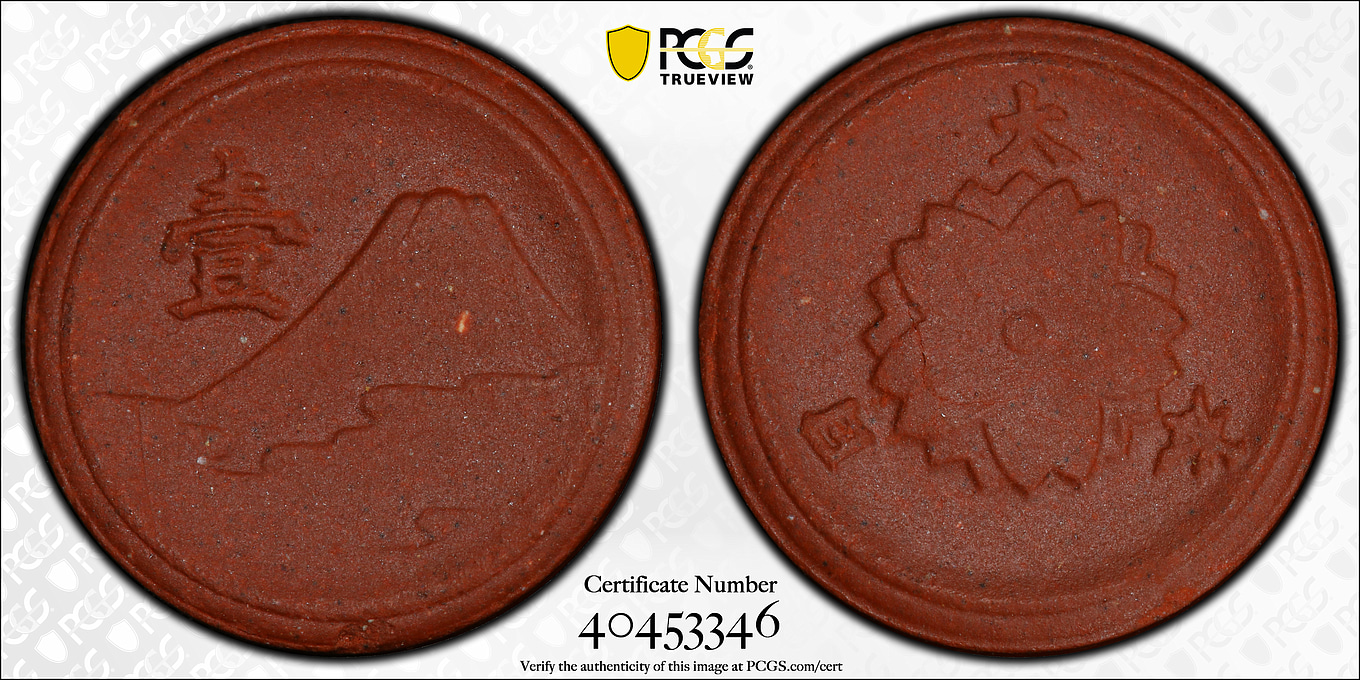A Japanese Porcelain Coin. Today’s curiosity came from the end of World War II when Japan became desperate to manufacture coinage for circulation without metal which was in short supply. Experiments began in 1944 but it would not be until 1945 when the Kyowashinkou Porcelain Company in Kyoto would use a mixture of 60% Sankansaka Clay, 15% Granite, 15% Red Clay and 10% other material to make planchets which were die struck and baked at 1,250 degrees to produce this coin. The coins were due to enter circulation in July of 1945, however the War ended on August 15, 1945 which halted the release of the coins. Some coins did circulate with one source saying for a single day. Most of the coins were destroyed but survivors such as this example PCGS MS65 still exists today.
A Japanese Porcelain Coin. Today’s curiosity came from the end of World War II when Japan became desperate to manufacture coinage for circulation without metal which was in short supply. Experiments began in 1944 but it would not be until 1945 when the Kyowashinkou Porcelain Company in Kyoto would use a mixture of 60% Sankansaka Clay, 15% Granite, 15% Red Clay and 10% other material to make planchets which were die struck and baked at 1,250 degrees to produce this coin. The coins were due to enter circulation in July of 1945, however the War ended on August 15, 1945 which halted the release of the coins. Some coins did circulate with one source saying for a single day. Most of the coins were destroyed but survivors such as this example PCGS MS65 still exists today.
0 Comments
0 Shares
612 Views




